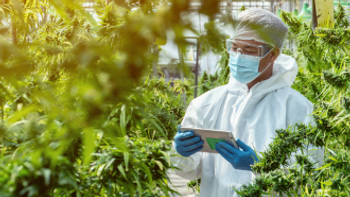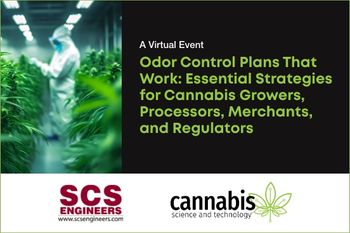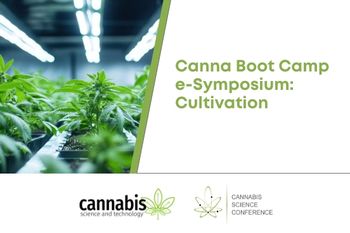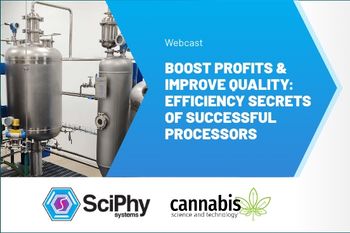
Novel LC–MS/MS Method for Analysis of California Regulated Pesticides and Mycotoxins in MCT Oil Cannabis
Wednesday, June 30, 2021 at 11am EDT| 8pm PDT | 4am BST | 5pm CEST
Register Free:
Event Overview:
Numerous reports for pesticide analysis in cannabis use time-consuming sample preparation methods (QuEChERS with dSPE or SPE) with poor sample preparation recoveries for some of the pesticides, and require use of both LC–MS/MS and GC–MS/MS based instruments for analysis of all the pesticides. This increases cost, complexity, and turnaround time of analysis substantially since they require use of two instruments and time consuming and expensive sample preparation methods. Moreover, GC–MS/MS methods are not as robust as LC–MS/MS methods for pesticide analysis in complex cannabis matrices since they require extensive sample preparation to prevent GC injection port contamination from complex matrices. To address this customer need for developing a single instrument method for pesticide analysis in cannabis edible products, we developed a novel LC–MS/MS method with a dual ESI and APCI source coupled with simple solvent extraction for analysis of all of 66 pesticides and 5 mycotoxins regulated by California in medium-chain triglyceride (MCT) oil cannabis tinctures. The LOQs of all of the pesticides and mycotoxins were well below California action limits of these analytes in cannabis-based non-inhalable or edible products.
Key Learning Objectives:
- A novel single instrument-based LC–MS/MS method with dual ESI and APCI source for analysis of all of pesticides and mycotoxins regulated by California in cannabis edible products to reduce cost of analysis.
- A fast, simple, and cheap sample preparation method—solvent extraction to achieve high throughput with good recovery of all of analytes.
- Internal standards added to compensate for ion suppression effects from cannabis matrix to improve accuracy.
- The data demonstrates that analysis of PCNB and other chlorinated pesticides is selective, sensitive, and linear with LC–MS/MS so customers do not require GC–MS/MS for this analysis.
Who Should Attend:
- Laboratory directors
- Analytical scientists
- Laboratory managers
- Procurement manager
Speakers
Avinash Dalmia
Principal Application Scientist
PerkinElmer
Avinash Dalmia received his PhD in chemical engineering in 1996 from case western reserve university in Ohio. Avinash Dalmia is a principal scientist and leader for cannabis application group at PerkinElmer. He pioneered the development of LCMSMS method with dual ESI/APCI for analysis of all of pesticides in cannabis. During last 10 years at PerkinElmer, he has been involved in carrying out studies for design and optimization of different mass spectrometry ionization sources such as electrospray, APCI and direct sampling analyzer and has developed more than 60 applications using HPLC and GC coupled with different MS instruments. His most recent research interest is in analysis of low levels of pesticides and cannabinoids in cannabis related matrices. During his career, he has presented his research accomplishments in research areas varying from electrochemical sensors, fuel cells, catalysts, thermal and fluid flow modeling, MS sources, HPLC/MS and GC/MS applications and has published 15 papers and 20 patents. Recently, he was a recipient of the 2021 Elsholy award for his contributions to cannabis analysis and research.
Register Free:
Newsletter
Unlock the latest breakthroughs in cannabis science—subscribe now to get expert insights, research, and industry updates delivered to your inbox.




